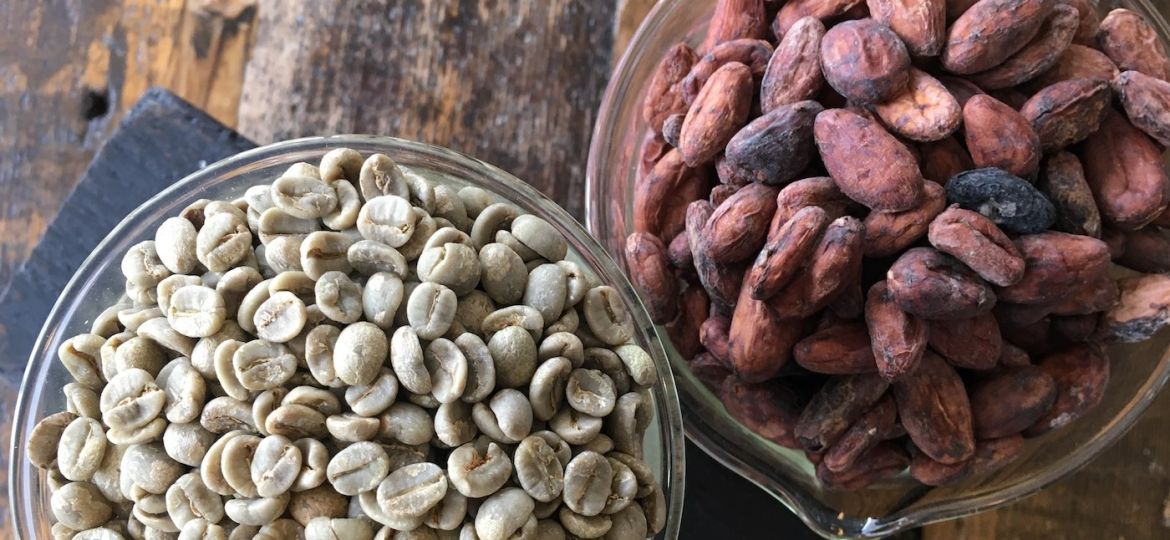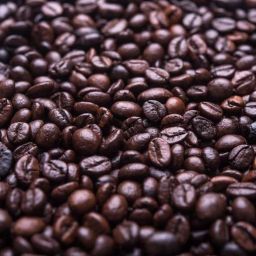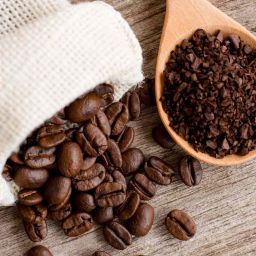
Cocoa and coffee beans are two of the most cherished commodities in the world, each boasting a rich history and profound cultural significance.
Cocoa beans, the primary ingredient in chocolate, and coffee beans, the cornerstone of the beloved beverage coffee, have been cultivated for centuries. Both beans have played pivotal roles in social rituals, economies, and even politics, marking their importance across various cultures and societies.
Historical Origins
The journey of cocoa beans began with the ancient Mayans and Aztecs in Mesoamerica, who first cultivated these beans and regarded them as sacred, using them to make a bitter drink called ‘xocoatl’. Coffee beans have their roots in Ethiopia, discovered by shepherds who noticed the energizing effects on their goats after consuming the coffee plant.
The cultivation of coffee spread from Ethiopia to the Arabian Peninsula and then across Europe in the 17th century, becoming a global phenomenon. Both beans have significantly influenced global trade and culture, evolving into staples in diets and economies worldwide.
Botanical Differences
Cocoa and coffee beans hail from distinct botanical families, each with unique characteristics, appearances, and growth conditions. Cocoa beans are produced by the Theobroma cacao tree, translating to “food of the gods,” a name that reflects the esteem in which they are held.
These trees thrive in tropical climates, requiring substantial rain and shade, and can grow up to 15-25 feet tall. In contrast, coffee beans come from the Coffea plant, which prefers subtropical and equatorial climates with cooler temperatures.
Coffee trees are often planted during the rainy season and grow best when shielded from direct sunlight, taking 3-4 years before bearing the coffee cherries that house the beans.
The growth conditions for each type of bean also differ significantly. Cocoa beans are more sensitive to their environment, flourishing under specific conditions of humidity and temperature, typically in the shade of taller trees.
Coffee beans, however, are more adaptable but still require careful management and specific climatic conditions to thrive, often at higher elevations near the equator.
Processing Methods
The processing of cocoa and coffee beans is distinct, each following a unique path from harvest to final product, critically influencing their flavor and use. Cocoa beans are harvested from the Theobroma cacao tree, encased in pods.
These beans undergo fermentation, a crucial step where beans are left in heaps or boxes for several days to develop deep, complex flavors. After fermentation, beans are dried, reducing moisture to prevent spoilage. The next stages, roasting and grinding, transform the beans into cocoa powder or cocoa butter, foundational for chocolate and other cocoa products.
Coffee beans, on the other hand, start their journey being picked from the Coffea plant. The outer cherry is removed, and the green beans inside are washed and dried. Roasting is a pivotal process for coffee beans, where flavor, aroma, and color are developed.
The duration and temperature of roasting influence the bean’s bitterness and strength, crucial for creating the desired coffee profile. Finally, grinding prepares the beans for brewing, extracting the rich flavors and aromas coffee is known for.
Flavor Profiles and Uses
The flavor profiles of cocoa and coffee beans are markedly distinct, directly influencing their uses in food and beverages. Cocoa beans offer a sweet, rich base for chocolate, renowned for its creamy texture and deep flavors ranging from bitter to sweet, depending on the processing.
Beyond chocolate, cocoa powder and butter are used in baking, confectionery, and cosmetics, highlighting the bean’s versatility.
Coffee beans boast a wide range of flavors, from the earthy, robust notes of dark roasts to the light, acidic nuances of lighter roasts. The complexity of coffee’s flavor profile makes it a favorite beverage globally, served from espresso to latte.
Beyond drinking, coffee beans enhance the taste of desserts, sauces, and even meats, lending a bitter, aromatic depth to culinary creations.
Nutritional Value and Health Benefits
Both cocoa and coffee beans are nutritional powerhouses, offering numerous health benefits. Cocoa is rich in antioxidants, particularly flavonoids, which are known to reduce inflammation and improve heart health.
It also provides essential minerals like iron, magnesium, and zinc, supporting overall wellness. The health benefits of cocoa extend to improved blood flow and lower blood pressure, contributing to cardiovascular health.
Coffee beans are celebrated for their high antioxidant content, including chlorogenic acids, which may lower the risk of chronic diseases such as type 2 diabetes and Parkinson’s disease.
The caffeine in coffee is well-known for enhancing alertness and concentration, but it also boosts metabolic rate, potentially aiding in weight management. Despite its benefits, moderation is key, as excessive caffeine intake can lead to adverse effects.
In sum, the distinct processing methods of cocoa and coffee beans lead to unique flavor profiles and uses, while both offer significant nutritional and health benefits.
Cultural and Economic Impact
The cultural and economic impact of cocoa and coffee beans extends globally, influencing trade, cultivation, and consumption patterns. Cocoa and coffee have been integral to societies for centuries, not just as commodities but as cultural symbols.
Cocoa, once a currency and a luxury for the elite in ancient societies, remains a staple in celebrations and daily life, signifying luxury and comfort. Coffee, on the other hand, has fostered social interactions in coffeehouses and homes worldwide, becoming synonymous with wakefulness and productivity.
Economically, both crops are vital to the economies of numerous countries, especially in the Global South, where they are key exports. The trade of cocoa and coffee influences global markets, affecting millions of livelihoods from small-scale farmers to international corporations.
The cultivation practices also have significant environmental impacts, driving discussions on sustainable and ethical sourcing to ensure the longevity and health of these crucial industries.
FAQS
Are Cocoa and Coffee Beans Related?
Despite the similarities in their use and cultivation, cocoa and coffee beans hail from different botanical families. Cocoa beans come from the Theobroma cacao tree, whereas coffee beans are harvested from the Coffea plant.
These differences underline the unique origins and characteristics of each, despite their shared roles in global trade and consumption patterns.
Their distinct botanical classifications lead to varied cultivation requirements, processing methods, and flavor profiles, emphasizing the diversity within agricultural commodities.
Can You Substitute Cocoa Beans for Coffee Beans?
Substituting cocoa beans for coffee beans is not straightforward due to their distinct flavor profiles and uses in food and beverage preparation. While both can contribute to rich, flavorful beverages, cocoa beans are primarily used for chocolate and related products, offering a sweeter, milder flavor.
Coffee beans, known for their stimulating effects and bold taste, are irreplaceable in beverages like espresso and cappuccino. Each bean serves unique purposes in culinary applications, making direct substitution impractical for achieving desired flavors and effects.
How Does Caffeine Content Compare?
The caffeine content in cocoa and coffee beans varies significantly, impacting their health effects and energy-boosting properties. Coffee beans contain a higher concentration of caffeine, known for its stimulating effects on the central nervous system, enhancing alertness and energy levels.
A typical cup of coffee can contain 95 mg of caffeine or more, offering a substantial energy boost. In contrast, cocoa beans have lower caffeine levels but include theobromine, another mild stimulant, providing a gentler lift. This difference makes cocoa a less potent stimulant compared to coffee, suitable for those seeking milder effects.
Summary of Findings
Throughout this exploration, we have established that cocoa and coffee beans, despite their apparent similarities in global trade and consumption, originate from distinct botanical families.
Each bean has undergone unique processing methods, contributing to their diverse flavor profiles and uses in culinary traditions. Their nutritional content and health benefits further differentiate them, with varying levels of caffeine and antioxidants.
The cultural and economic significance of cocoa and coffee beans underscores their importance in societies worldwide, affecting trade, cultivation practices, and consumption patterns.
Final Thoughts
Cocoa and coffee beans play unique roles in global societies, not only as agricultural products but as cultural icons that influence daily life and global economies.
The continuous interest in their cultivation, processing, and consumption speaks to their enduring appeal and significance. As we move forward, the challenge and opportunity lie in ensuring the sustainable and ethical production of these beans, safeguarding their future for generations to come.
Reflecting on their journey from ancient times to the present day enriches our appreciation for these remarkable beans and the drinks that bring comfort and energy to many around the world.








